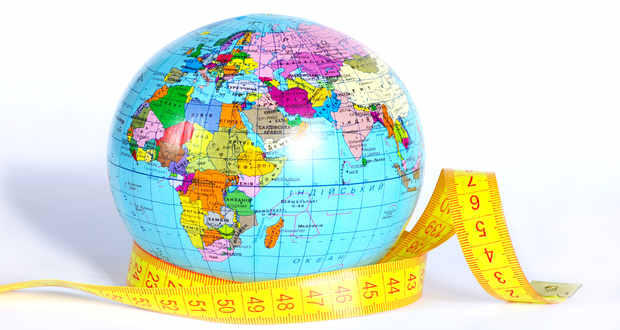WhatIs a Height and Weight Chart?
Height and weight charts can determine whether you’re the correct weight for your height. Healthcare providers use these tools to monitor:
- childhood growth and development
- weight management
- weight loss
When you go in for a regular checkup, your healthcare provider will likely take your height and weight measurements. They then use the measurements to determine whether you’re in a normal weight range for your height, age, and gender.
It’s important to recognize that these tools are only part of health assessments. No one number fits every individual.
What Are the Types of Height and Weight Charts?
Healthcare providers use three primary types of charts to measure height and weight.
Head circumference
This is a growth chart for children up to 36 months old. During the assessment, a healthcare provider measures around the widest part of the head. Normal height and weight usually directly correlates with a normal head circumference measurement.
A head that’s unusually small for a child’s height may indicate delayed brain development. On the other hand, an unusually large head-to-body ratio may indicate fluid retention in the brain.
Body mass index (BMI)
A BMI chart is among the most common height and weight charts used by healthcare providers. Medical professionals use this tool for people as young as age 2. The primary purpose is to determine whether you’re within a normal weight range for your height, or if you’re underweight or overweight.
According to the Centers for Disease Control and Prevention (CDC), individuals fall into one of the following BMI ranges:
- 18.5 or less: underweight
- 18.5 to 24.9: healthy weight range
- 25.0 to 29.9: overweight
- 30.0 or higher: obese
BMI derives from one of the following two formulas, depending on the units of measurement for height and weight:
- pounds and inches: weight (pounds) divided by [height (inches)] squared, and the result multiplied by 703
- kilograms and meters: weight (kilograms) divided by [height (meters)] squared
Waist circumference
This is a chart often used in conjunction with BMI. It’s based on the idea that a larger waist can indicate a higher-than-normal weight for your height. According to the CDC, a healthy waistline is less than 35 inches in non-pregnant women and less than 40 inches in men.
What Do the Measurements Mean?
Head circumference, and height and weight measurements are crucial in monitoring a child’s healthy development. Your pediatrician will place your child’s measurements on a chart that compares them to the average height and weight for someone your child’s age.
These are known as percentiles. The 50th percentile indicates the average height and weight for a given age group. Any percentile above 50 is above average, and any percentile below 50 is below average.
While percentiles are important for measuring a child’s growth and development, it’s important to be realistic. If your child is overweight for their height, you must determine whether lifestyle (lack of exercise or unhealthy diet) is a factor.
In contrast, being below average may indicate undernourishment. However, this is rare in the United States. Talk to your healthcare provider about all the factors that can influence height and weight in children.
As you reach your full adult height, the focus of BMI measurements transitions toward weight management. Adults with above-normal BMIs are encouraged to lose weight. The same is true for men and non-pregnant women with large waist measurements. Decreasing your weight by even a small percentage may help decrease your risk of heart disease and type 2 diabetes.
Healthcare providers pay special attention to children and adults with BMIs in the obese range. Obesity is an epidemic that raises the risk of developing serious health conditions. If exercise and diet do little to reduce your weight, your healthcare provider may suggest weight loss medications or bariatric surgery.
What Are the Drawbacks of Height and Weight Charts?
Height and weight charts are routine tools that help diagnose potential health problems. While number ranges can help, there’s no one-size-fits-all number for every person. In fact, the CDC points out that a BMI assessment is a screening tool, but it shouldn’t be the single test relied upon for any diagnosis.
If you take your measurements at home and are outside of a normal range, it may be helpful to schedule an appointment with your healthcare provider to ensure that no underlying health problems exist.
It’s also important to pay close attention to the evolution of your child’s height and weight. If your child’s measurements consistently reveal wide variations above or below a certain percentile, you may need to follow up with your pediatrician.
- Prev:Finding the Truth
- Next:Healthy Kitchen Essentials
-
Want to look younger? Try this Natural Food Diet Plan
-
Weight Loss Tip #109 – Brush your teeth right after dinner
-
Weight Loss Tip #33 – Swim to lose weight
-
One COOL TRICK to lose weight while sitting at your desk
-
Look perfect on your wedding with these 7 weight loss tips
-
Tried and True Weight-Loss Techniques
Seventy-one percent of Americans are overweight or obese. T
- DON'T MISS
- True weight loss stories: How a butter chicken lover lost 42 kg!
- Are you really burning so many calories on your treadmill?
- Battling the bulges with homeopathy
- Mary Kom: The real woman of substance
- Fitness Plan Day 155- Here’s how you can burn more calories
- 5 diseases you can prevent with weight loss
- Why Can’t I Lose Weight?
- Anna Hazare’s fitness secret: Naturopathy
- Weight Loss Tip #20 – Avoid late dinners to lose more weight
- 5 ways yoga helps you go from fat to fit!




